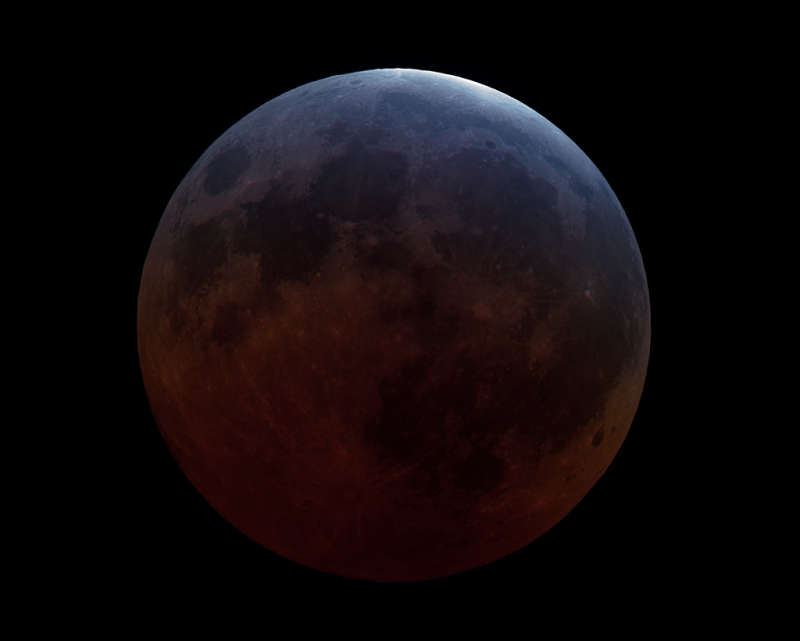Credit & Copyright: Rolf Olsen
Explanation:
Last week the Full Moon was completely immersed in
Earth's dark umbral shadow,
just briefly though.
The total phase of the
April 4, 2015
lunar eclipse lasted
less than 5 minutes, the shortest total
lunar
eclipse of the century.
In fact, sliding just within the Earth's umbral shadow's northern edge,
the lunar north stayed relatively bright, while a beautiful
range of blue and red hues emerged
across
the rest of the Moon's Earth-facing hemisphere.
The reddened light within the shadow that
reaches the lunar surface is filtered through the lower atmosphere.
Seen from a lunar perspective it comes from
all the sunsets and sunrises around the edges of the
silhouetted Earth.
Close to the shadow's edge, the bluer light is still
filtered through Earth's atmosphere, but
originates as rays of sunlight pass through layers high in
the upper stratosphere.
That light is colored by ozone that absorbs red light
and transmits bluer hues.
In this sharp telescopic view of totality from Auckland, New Zealand,
planet Earth, the Moon's north pole has been rotated to the
top of the frame.
1999 2000 2001 2002 2003 2004 2005 2006 2007 2008 2009 2010 2011 2012 2013 2014 2015 2016 2017 2018 2019 2020 2021 2022 2023 2024 2025 |
Январь Февраль Март Апрель Май Июнь Июль Август Сентябрь Октябрь Ноябрь Декабрь |
NASA Web Site Statements, Warnings, and Disclaimers
NASA Official: Jay Norris. Specific rights apply.
A service of: LHEA at NASA / GSFC
& Michigan Tech. U.
|
Публикации с ключевыми словами:
total lunar eclipse - лунное затмение
Публикации со словами: total lunar eclipse - лунное затмение | |
См. также:
Все публикации на ту же тему >> | |
